The story behind Red Bull's speed skating, MMA-infused downhill race

What in the world is a Red Bull Crashed Ice race? Take four short-track speed skaters, add about 30 pounds of muscle to each one, put them side-by-side in full body armor on a rock-hard serpentine bobsled course, and let them loose. Toss in a measure of mixed martial arts, and you’ve got Andrew Bergeson’s favorite pastime.
“This sport seemed like the perfect amalgam of all the sports I love,” says the 27-year-old Bergeson, a former collegiate linebacker from Red Wing, Minn. “The skating of hockey, physicality of football, racing of track and field, and jumps of freestyle skiing. Before I ever competed I knew I would love the sport.”
- MORE EDGE: Alex Thomson preps for race around the world
The Red Bull Crashed Ice World Championship series -- popularly known as ice cross downhill -- is a wild mix of muscle, sinew and steel, a mad dash of fast-twitch mayhem. The 2015 season opens this weekend in St. Paul, Minn., where crowds of more than 100,000 are expected to gather to watch the action. And action is the word. The sport’s aggressive, custom-made courses have been known to unnerve competitors.
“On my very first practice run, I was staring at this one part of the track where you just had to jump and hope your feet would catch you when you landed, and I thought, ‘What the hell did I get myself into?’” says 26-year-old Sydney Danielle O’Keefe, a former collegiate hockey player who now coaches at Shattuck-St. Mary’s in Fairbault, Minn. “I remember one of the girls there saying, ‘You got this, you can do it,’ and, ‘You just have to go for it.’”
Climbing El Capitan's Dawn Wall
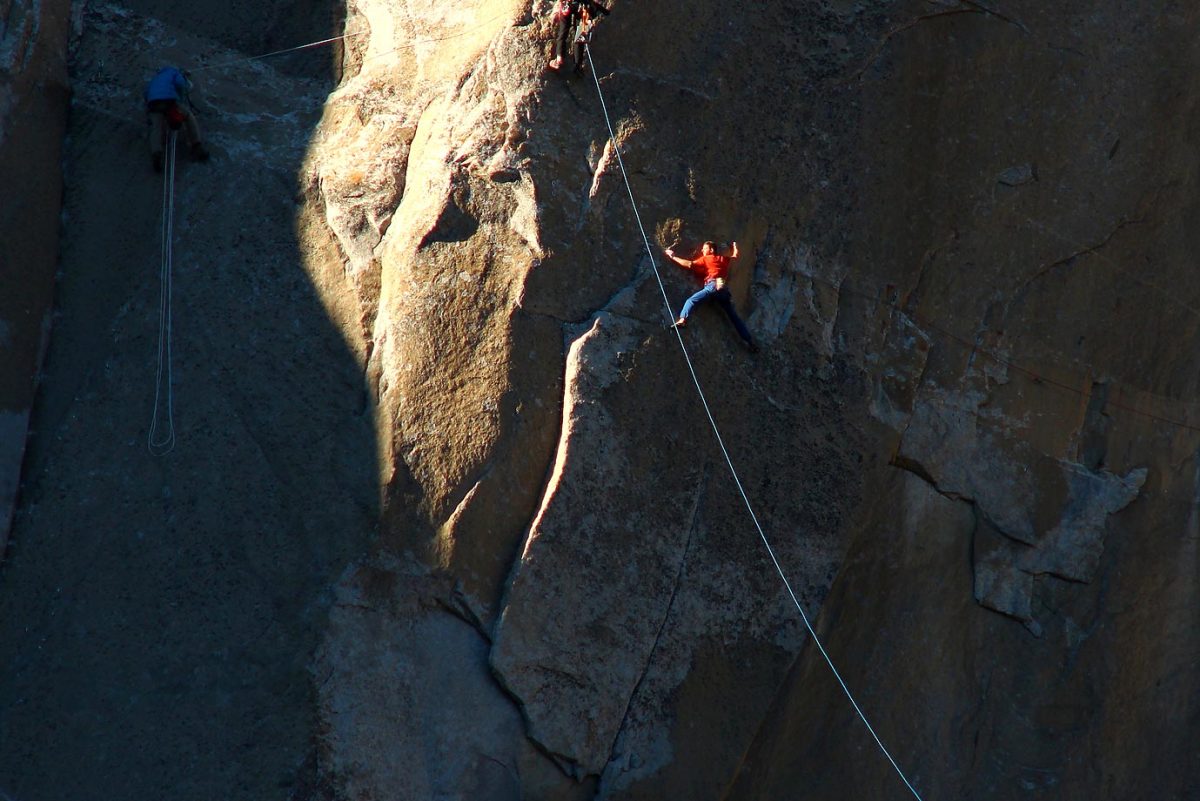
Tommy Caldwell working Pitch 15.
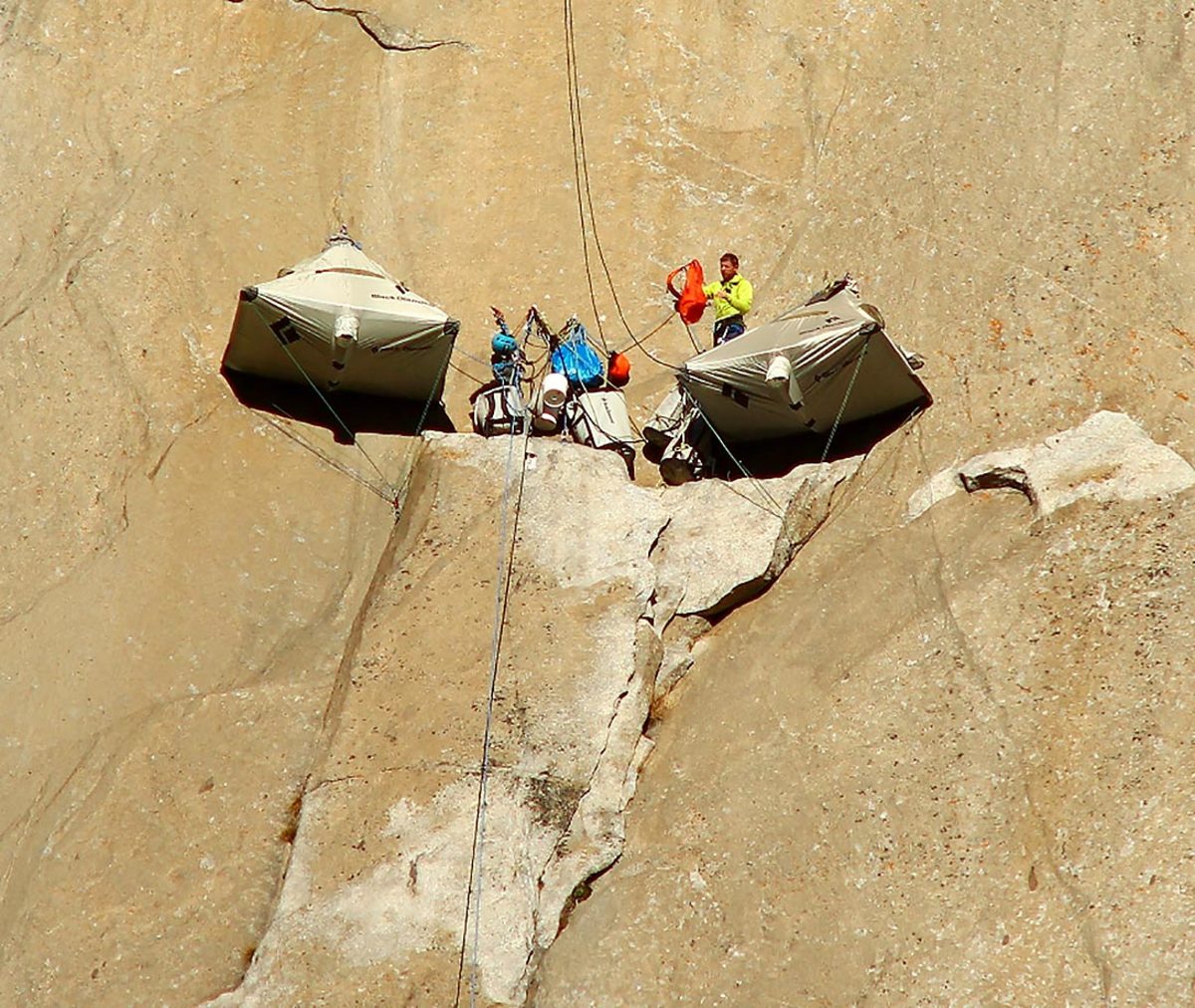
Tommy Caldwell setting up gear at Base Camp.
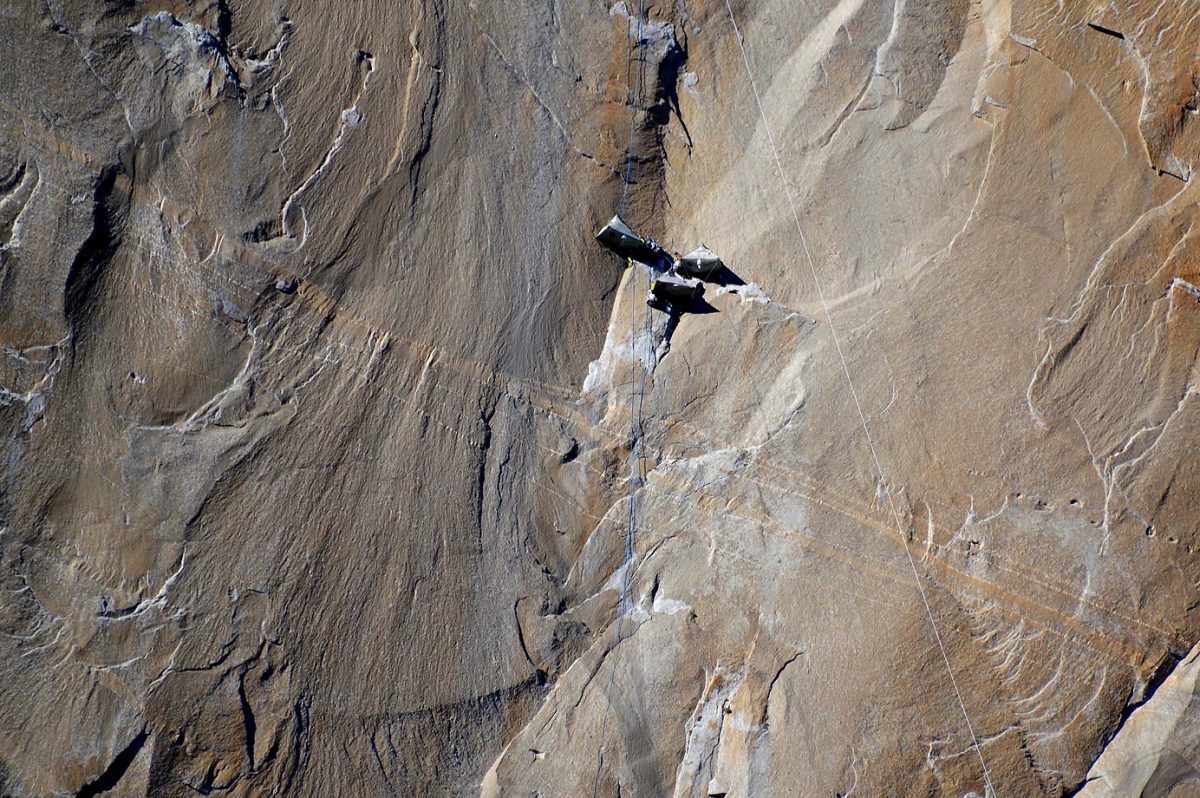
A wide view of the Camp along the Wall.
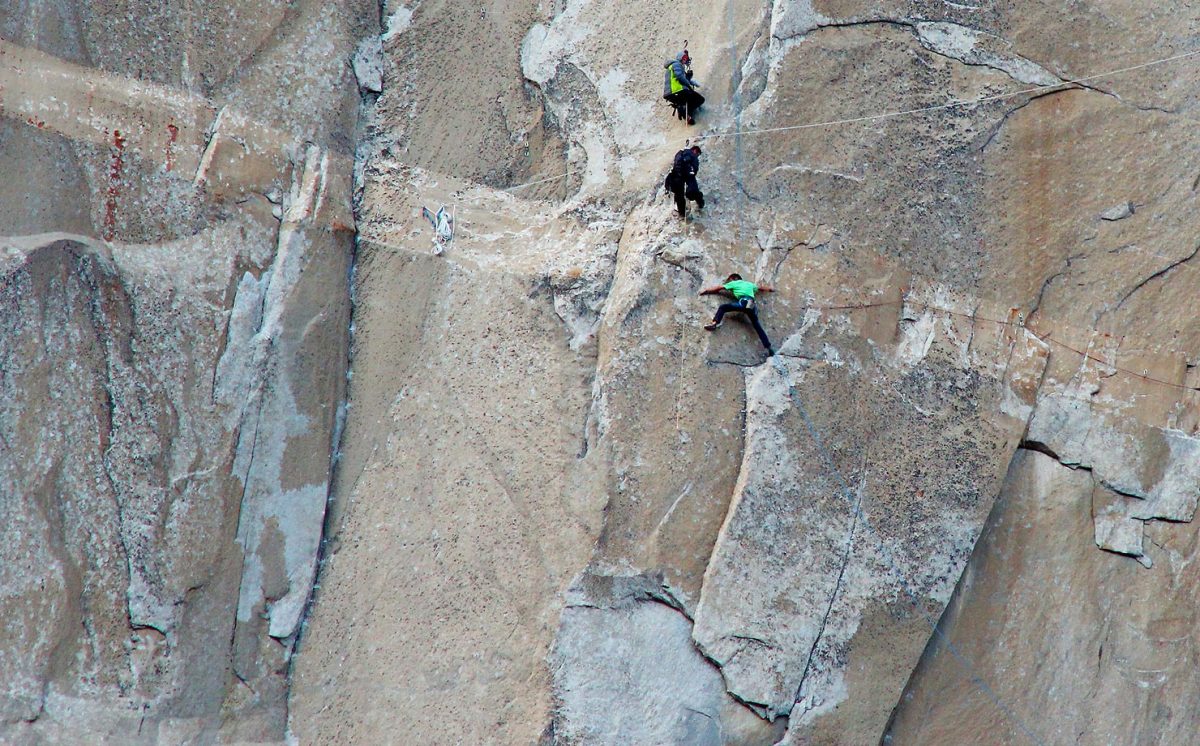
Kevin Jorgeson (in green) Climbing on Pitch 15 – top and center people are photographers.
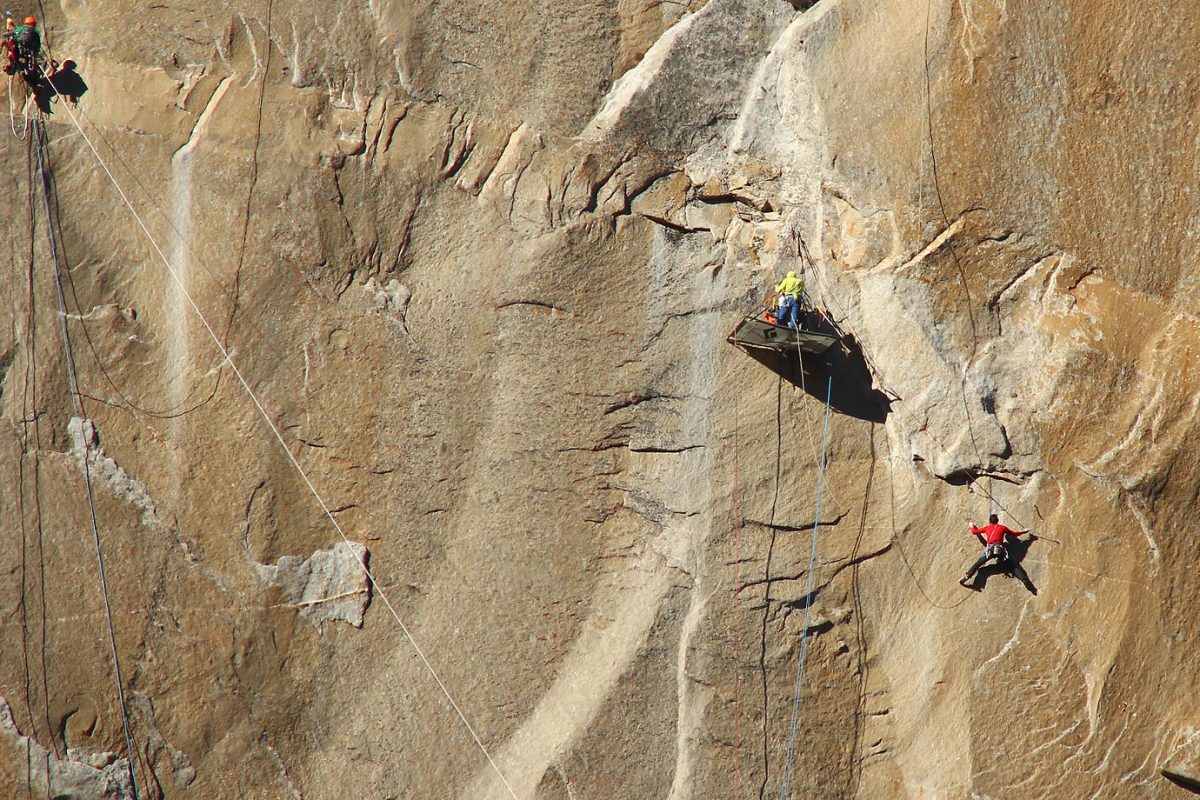
Kevin Jorgeson (in red) Climbing High up on Pitch 13 – Tommy in yellow and photographer in green.
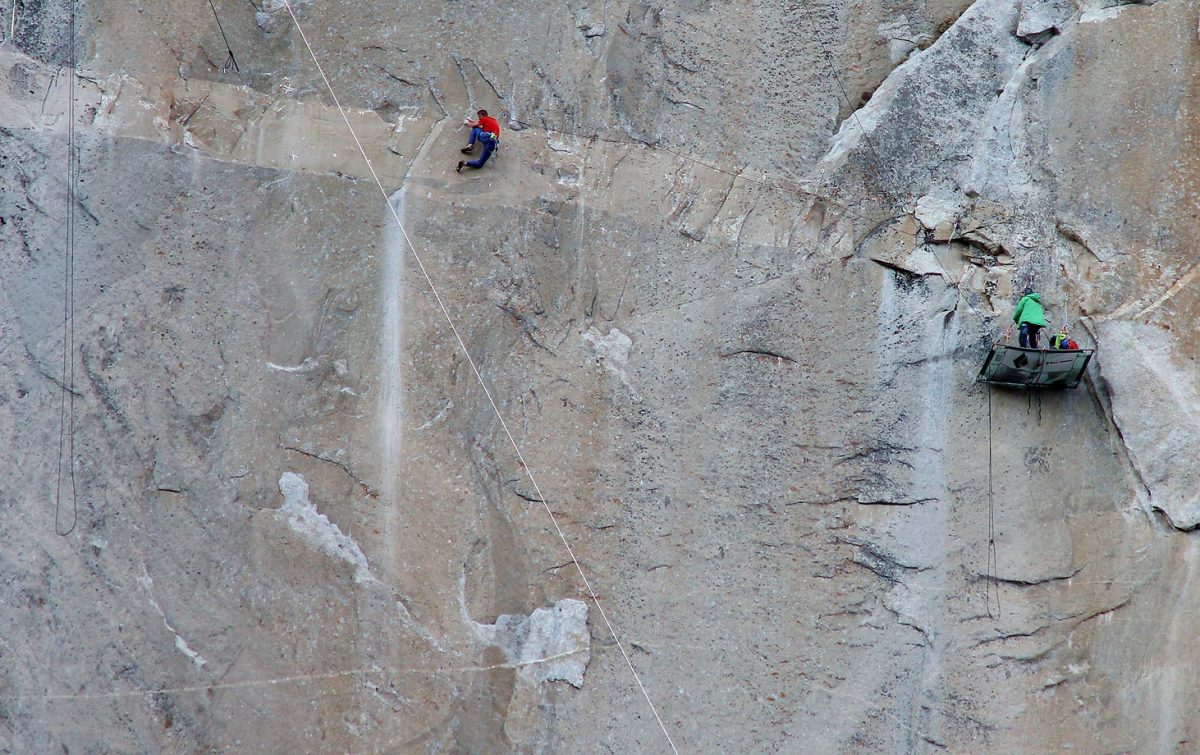
Tommy Caldwell (in red) Climbing on Pitch 14 – Kevin belaying in green.
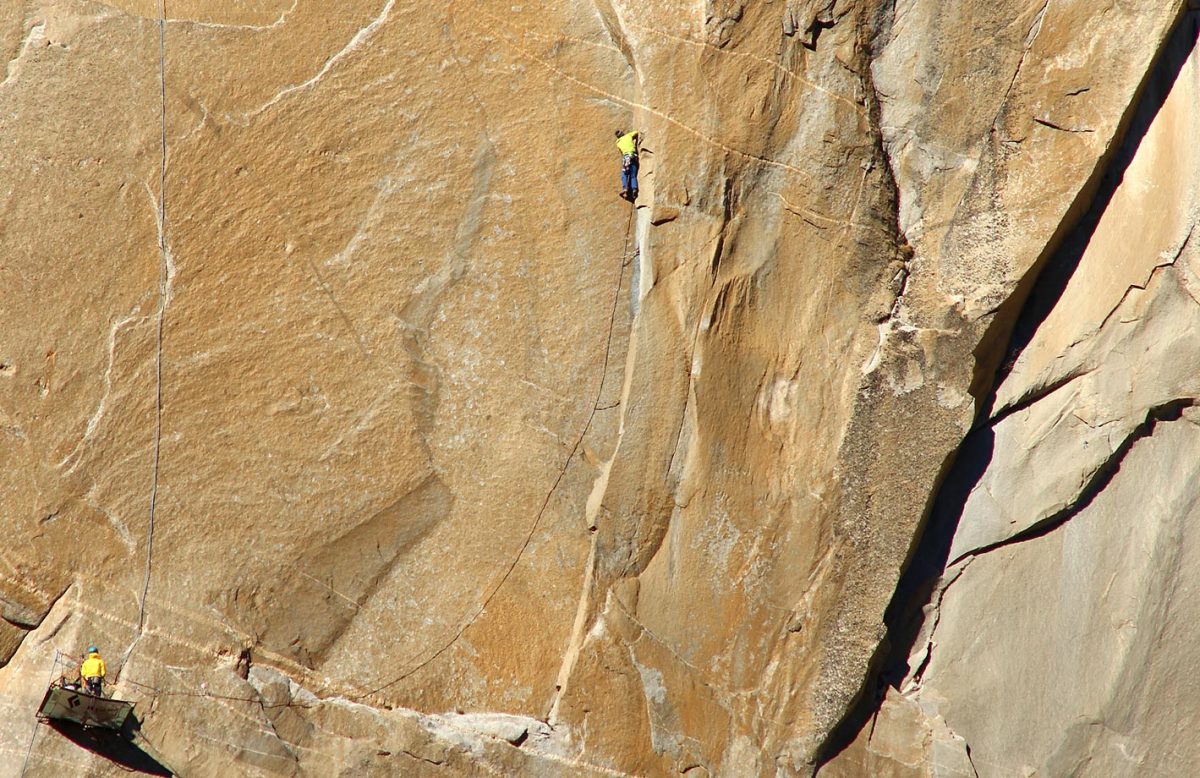
Tommy Caldwell climbing on Pitch 11 – Kevin Belaying in Yellow
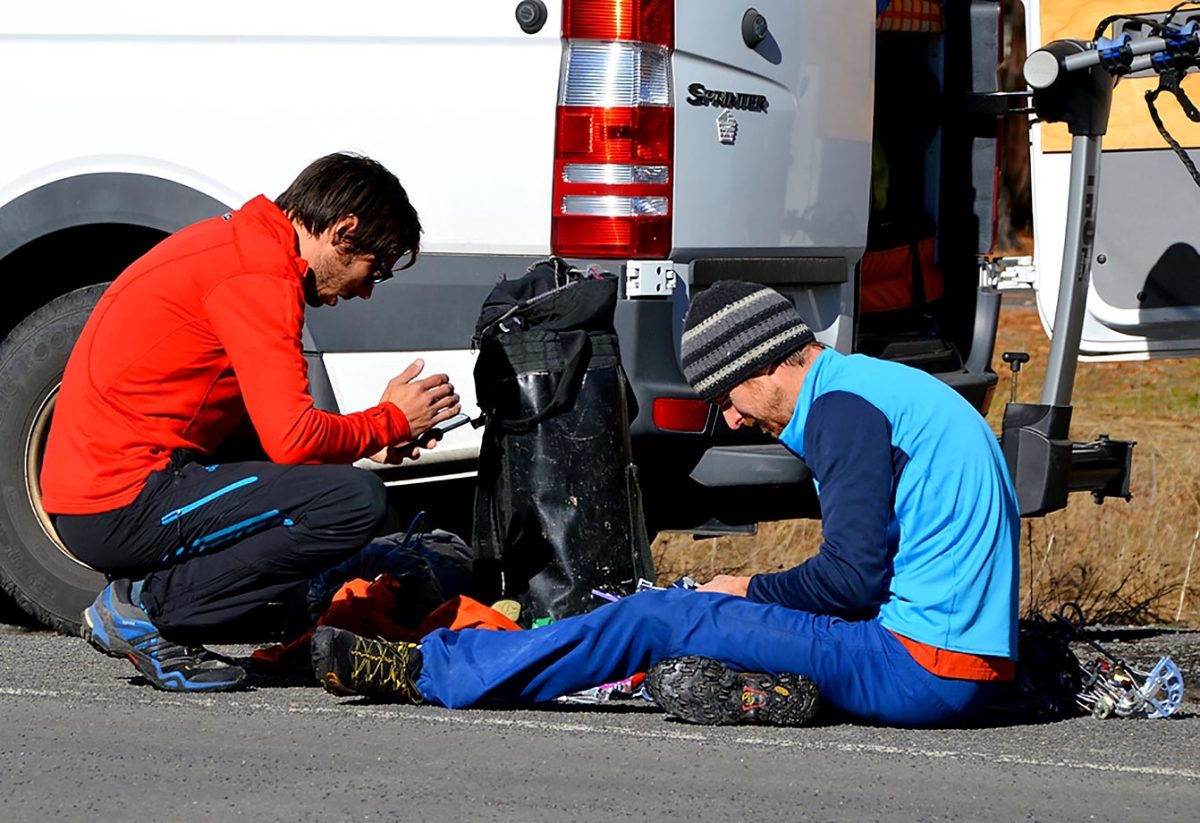
Kevin Jorgeson and Tommy Caldwell sorting gear in El Cap Meadow before heading up the wall.
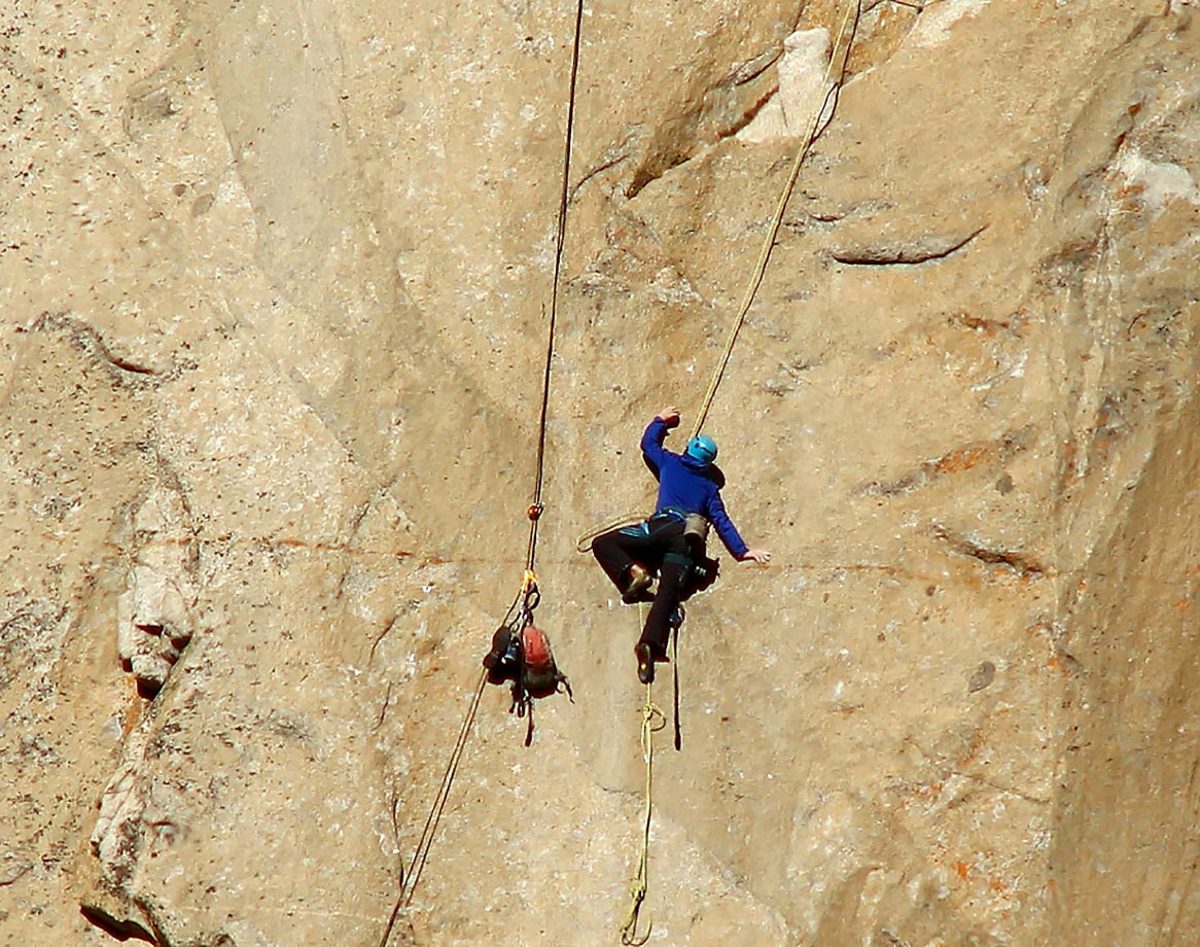
Kevin Jorgeson (in blue) on Pitch 8.
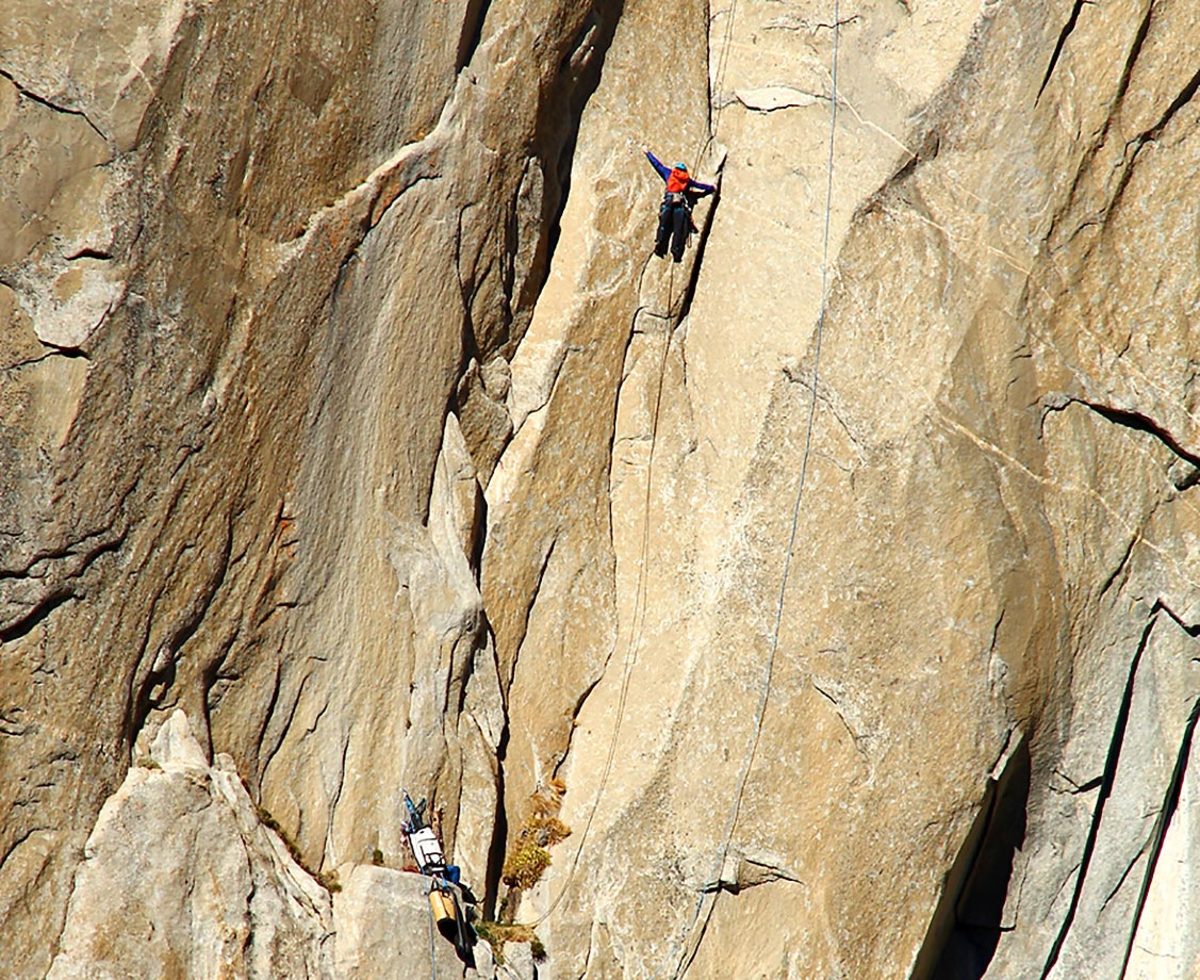
Kevin Jorgeson (in blue) high up on Pitch 8.
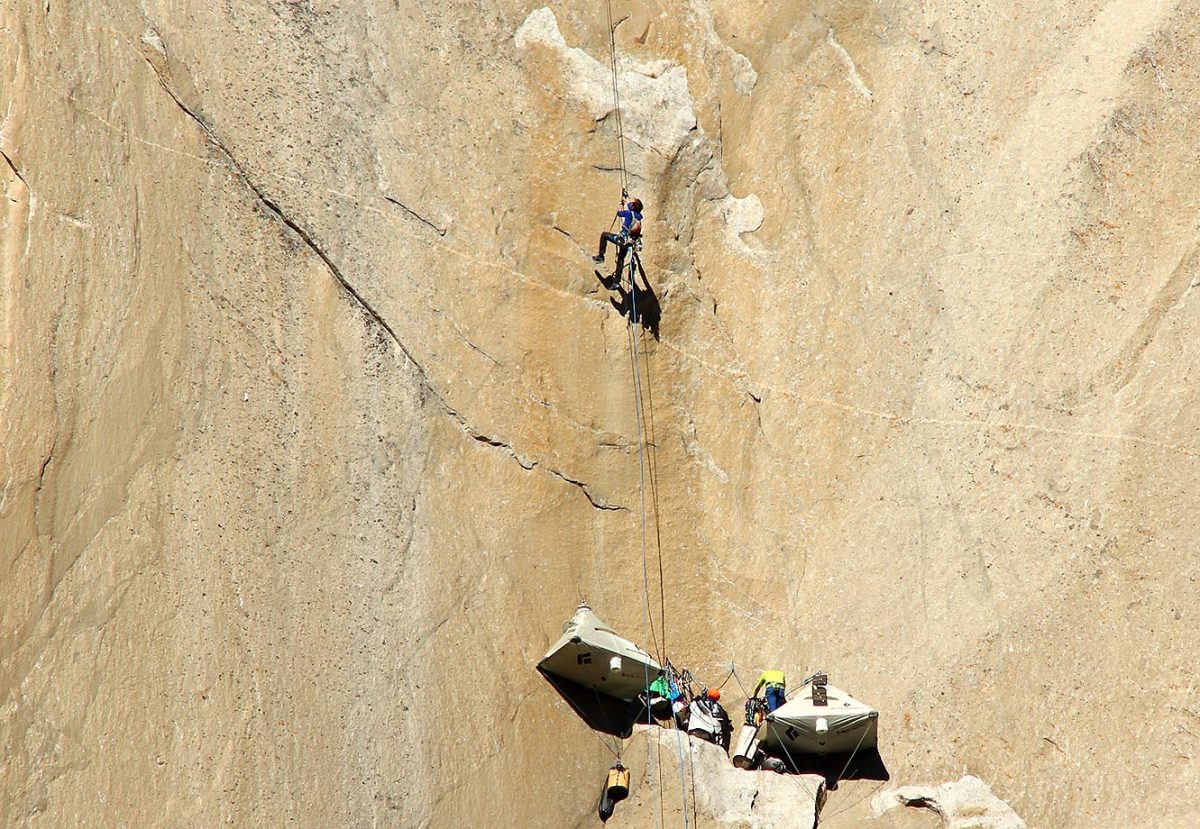
Kevin Jorgeson (in blue) ascending the rope from base camp to his next climb, while Tommy Caldwell sorts gear at camp (in yellow.)
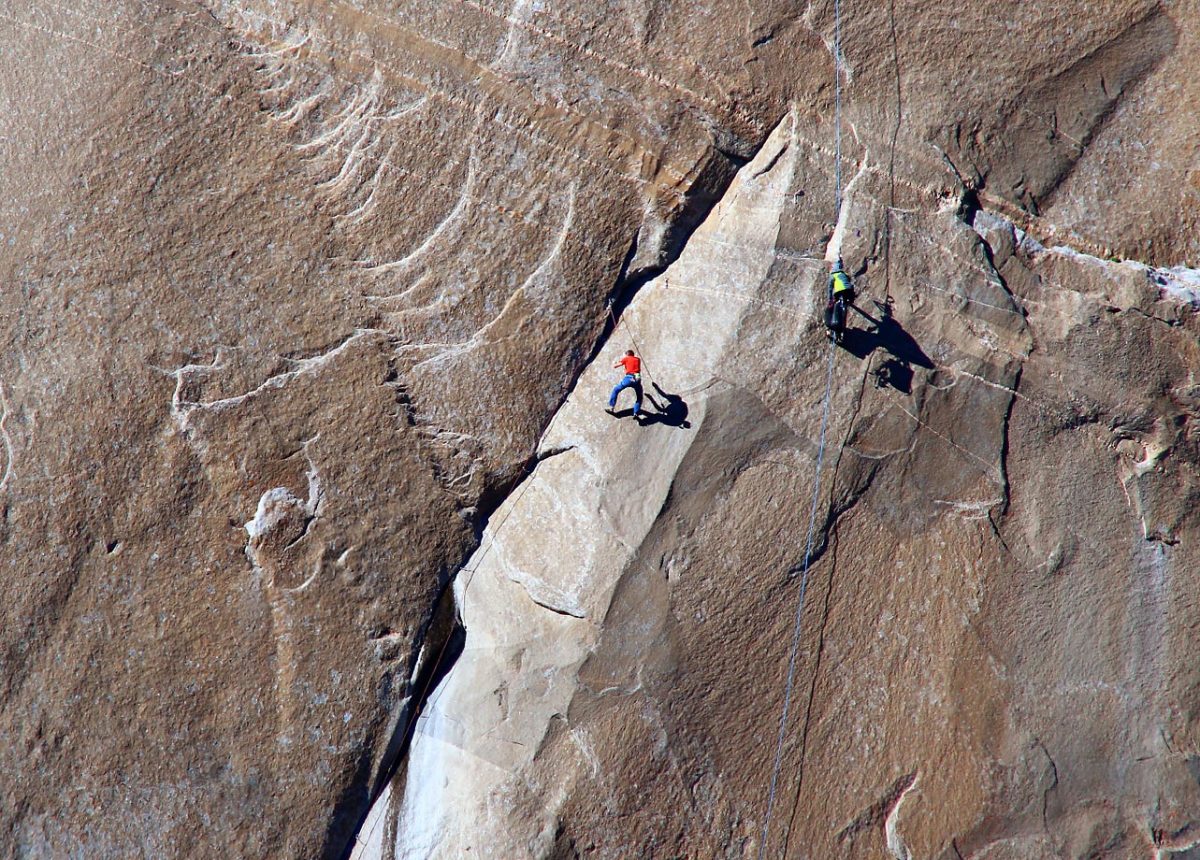
Tommy Caldwell (center in red) on pitch 10. Camera man Hangs close to his right to get the shot.
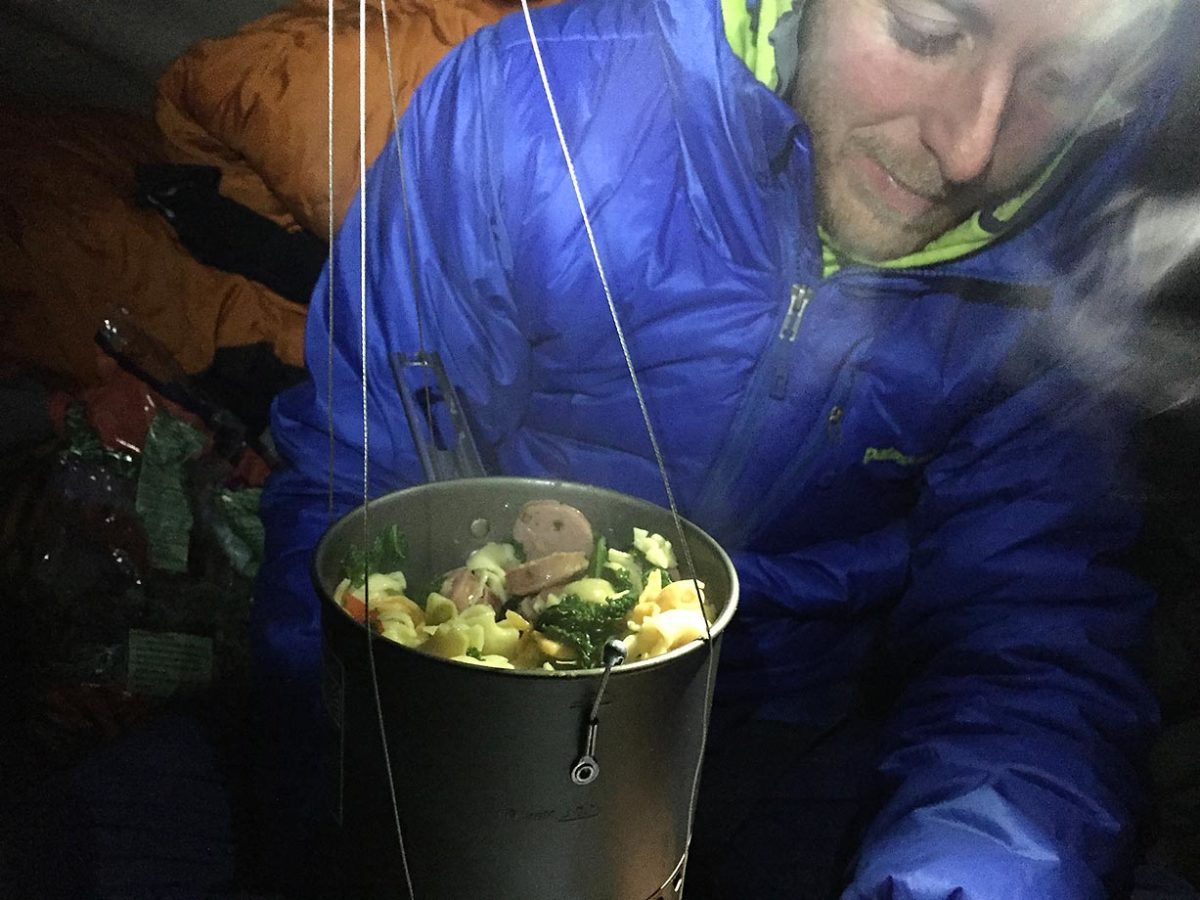
Tommy Caldwell eating some well earned dinner.
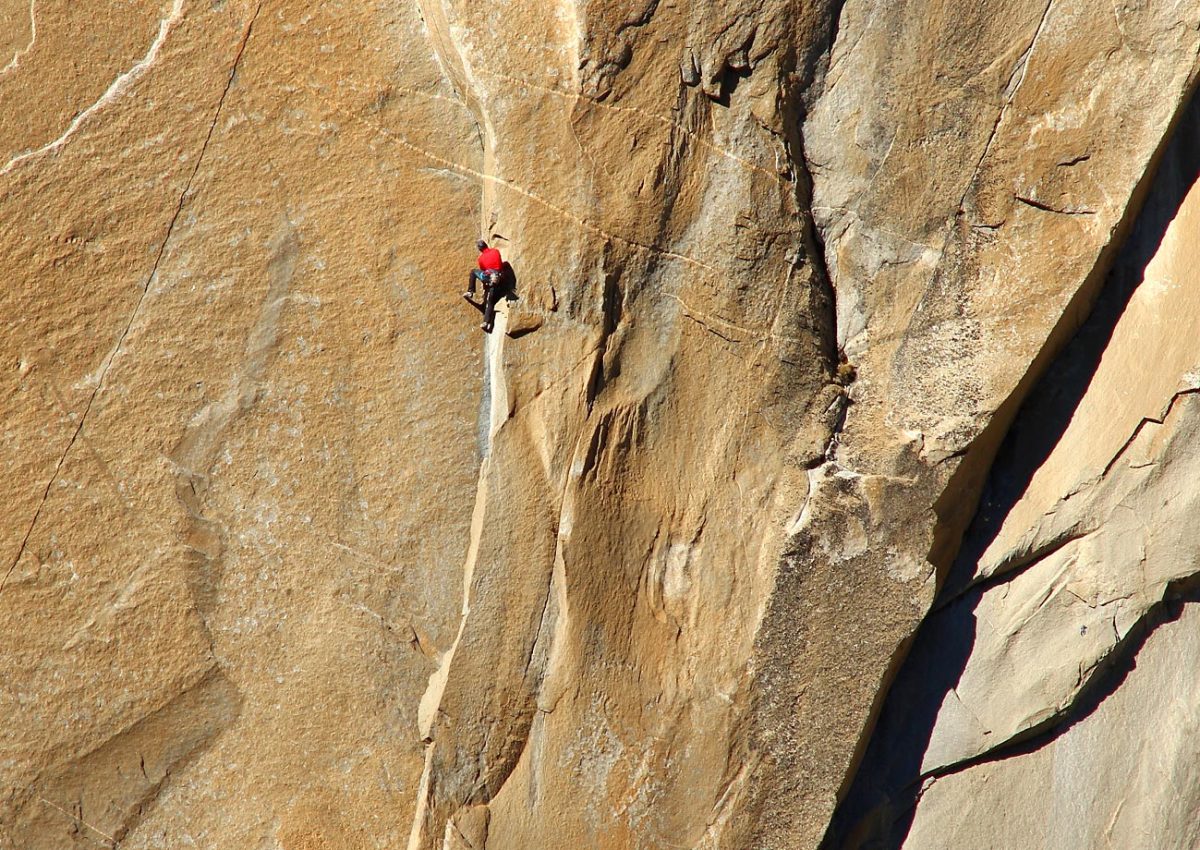
Kevin Jorgeson (in red) climbing Pitch 11.
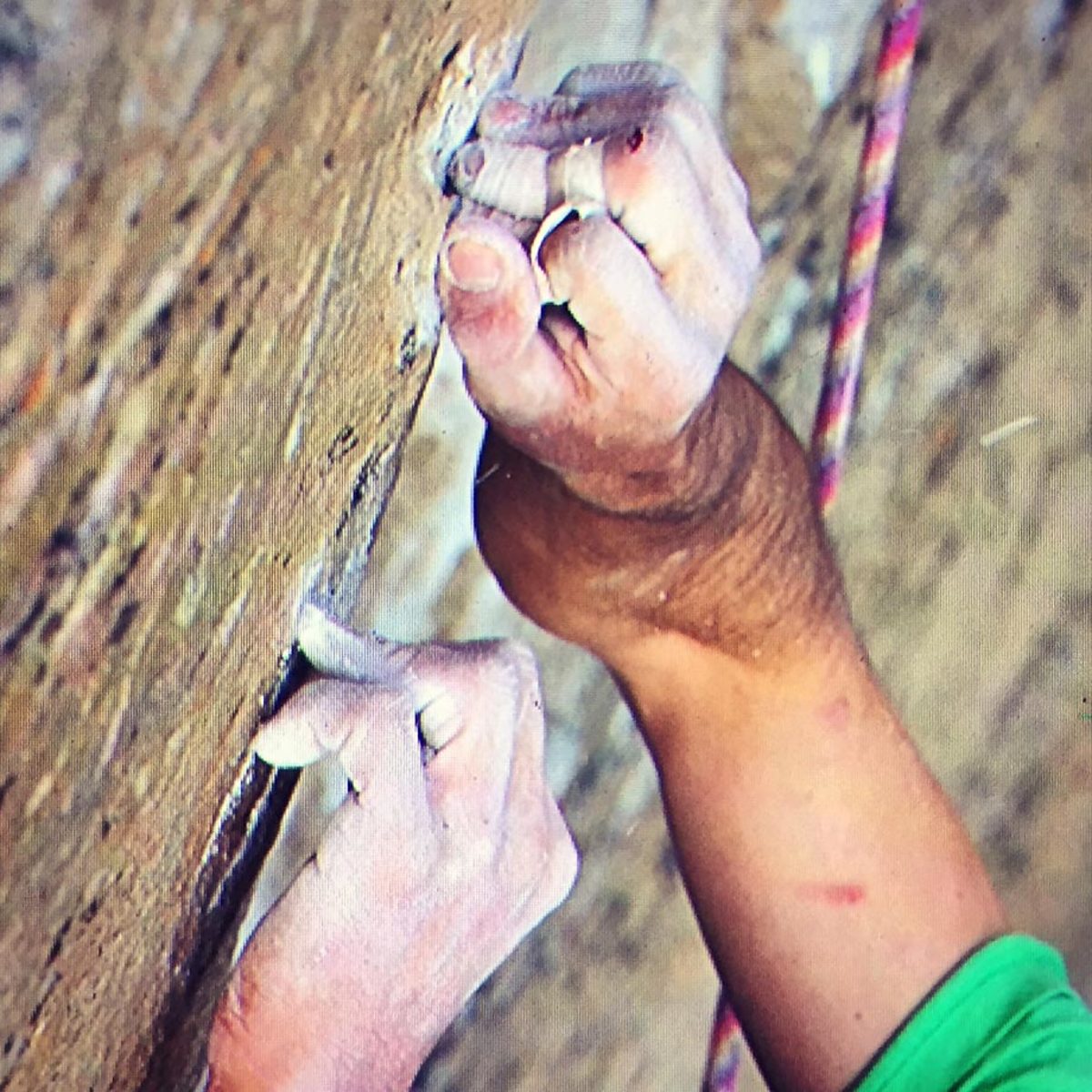
Kevin Jorgeson's fingers hopefully recovered.
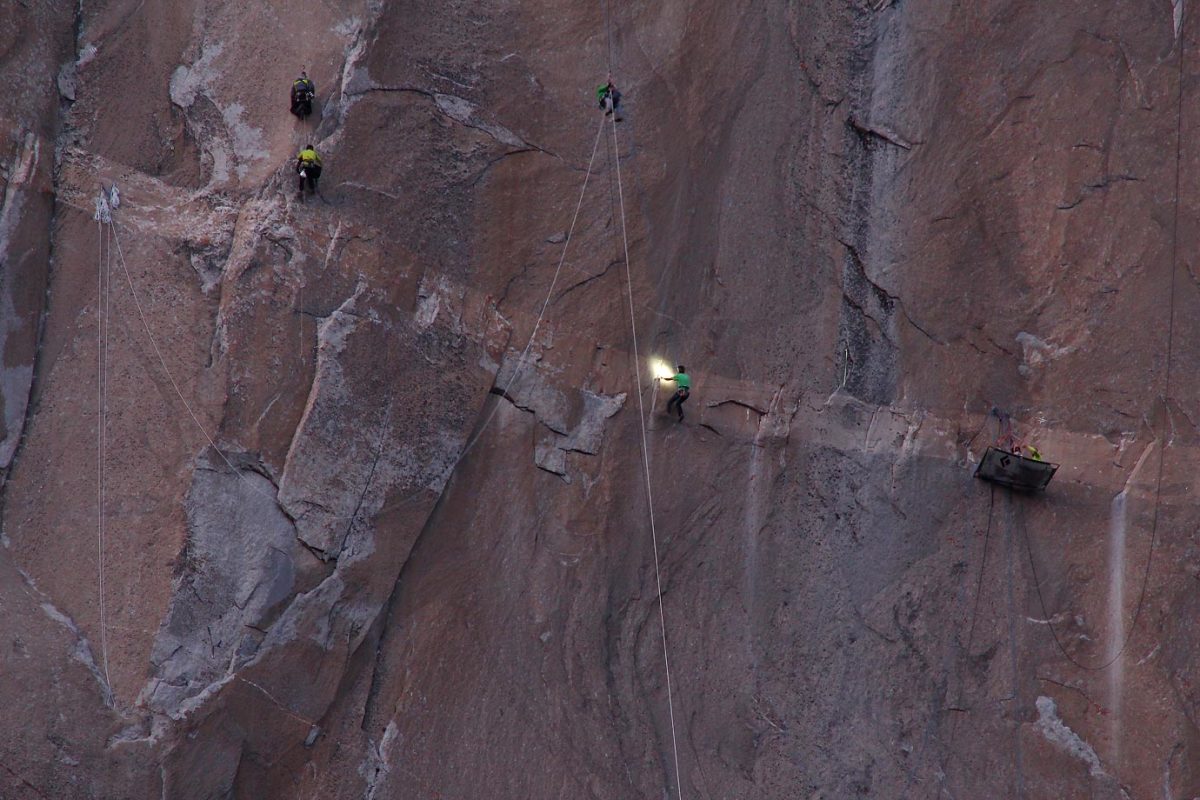
Kevin Jorgeson (center, in green) navigating Pitch 15 while Tommy Caldwell (right, in yellow) belays. Multiple cameramen hang on ropes taking photos and video.
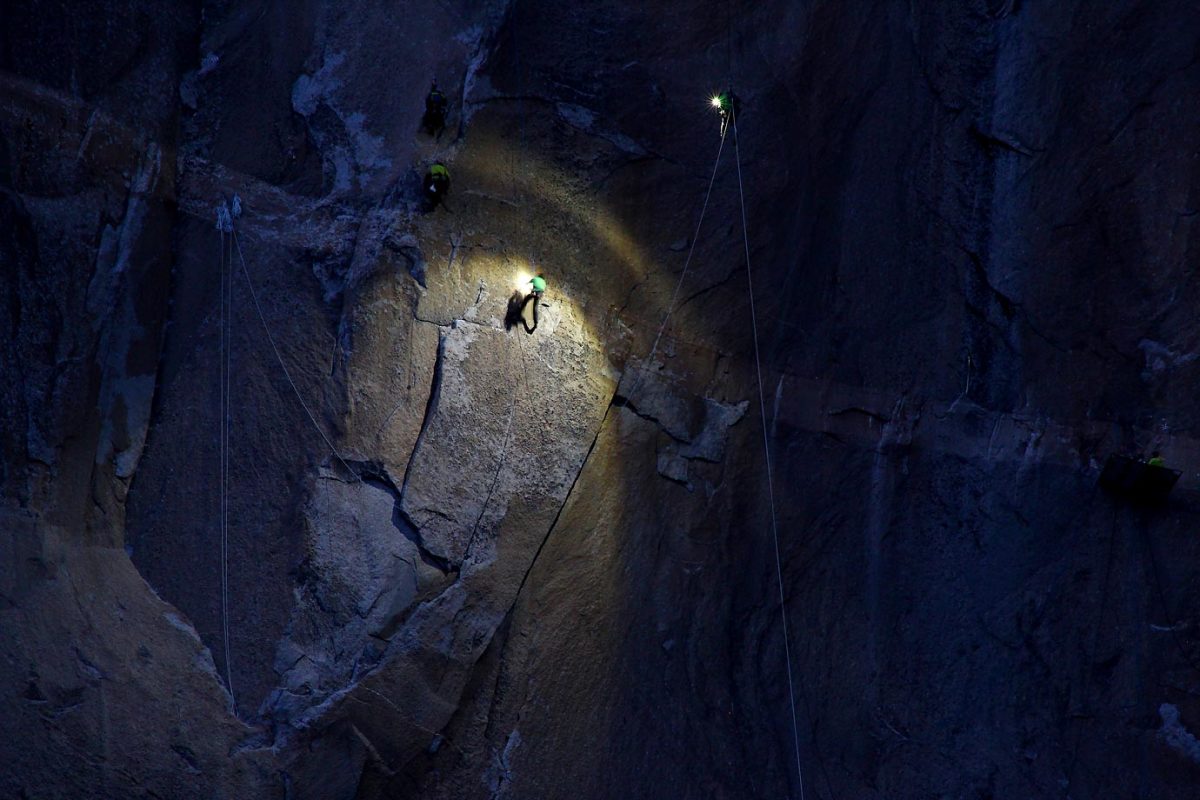
Kevin Jorgeson (center, in green) navigating Pitch 15 while Tommy Caldwell (far right, in yellow) belays. Multiple cameramen hang on ropes taking photos and video.
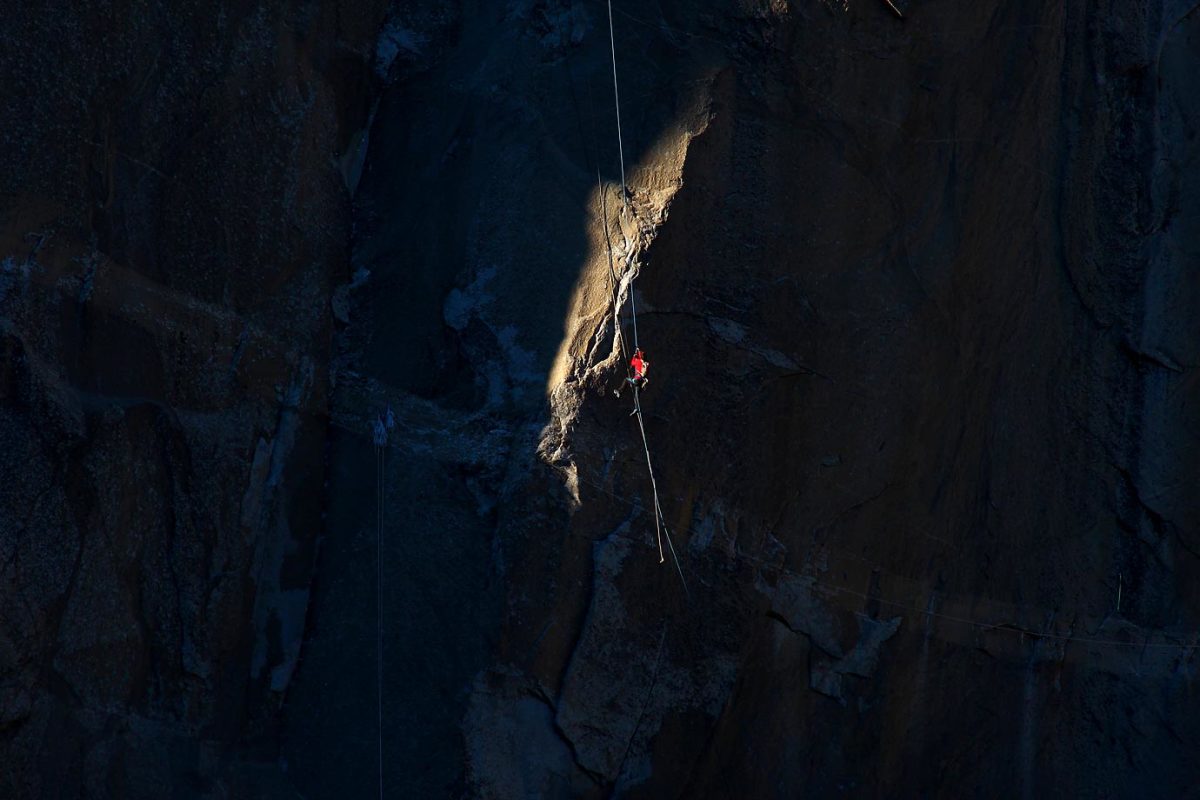
Kevin Jorgeson (in red) ascending the rope to Pitch 17.
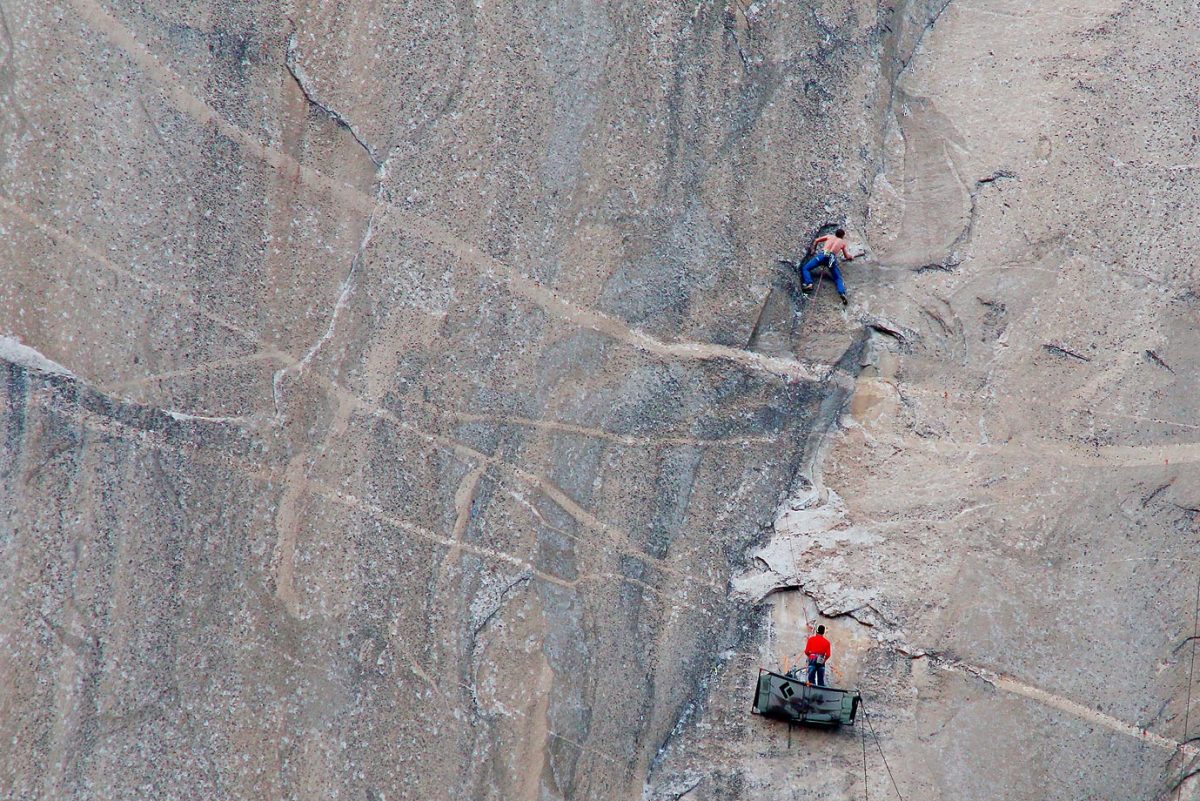
Tommy Caldwell (shirtless) climbing Pitch 17 and Kevin Jorgeson (in red) is belaying.
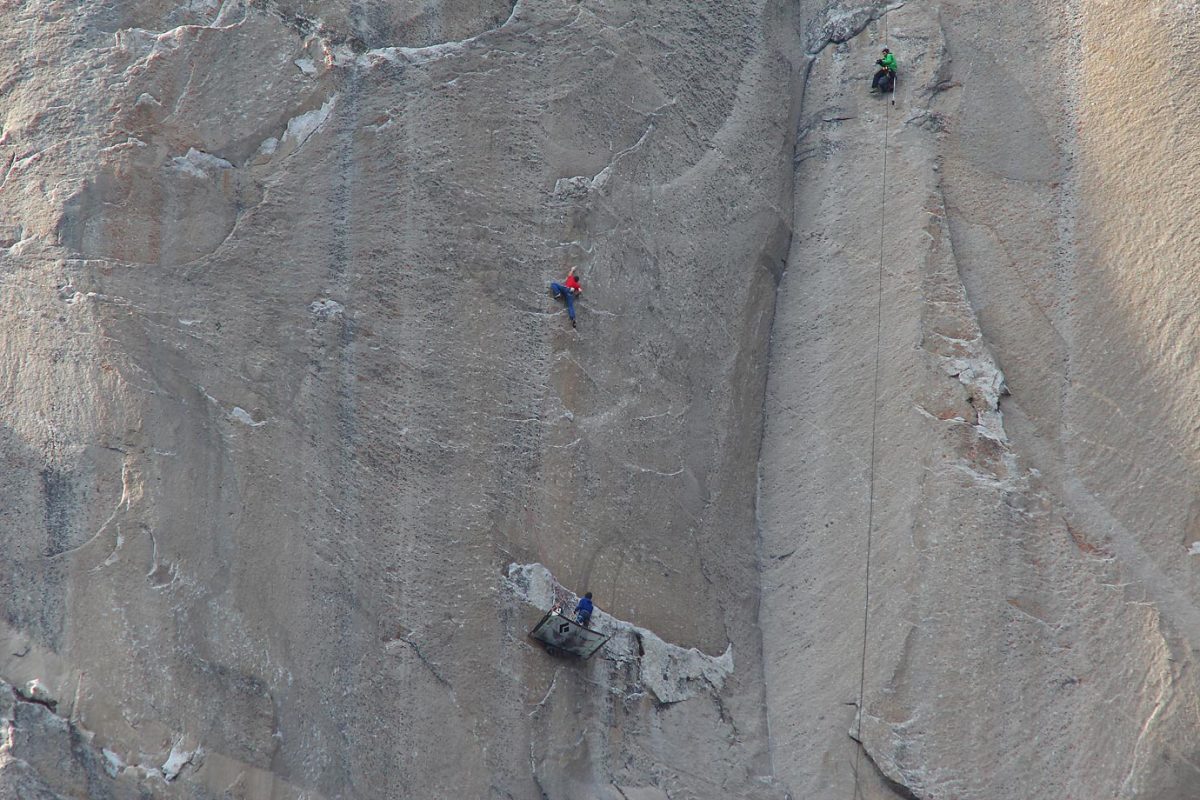
Tommy Caldwell (in red) climbing Pitch 19 and Kevin Jorgeson (in blue) is belaying on his rest day. Brett Lowell (cameraman, in green) is shooting from above.
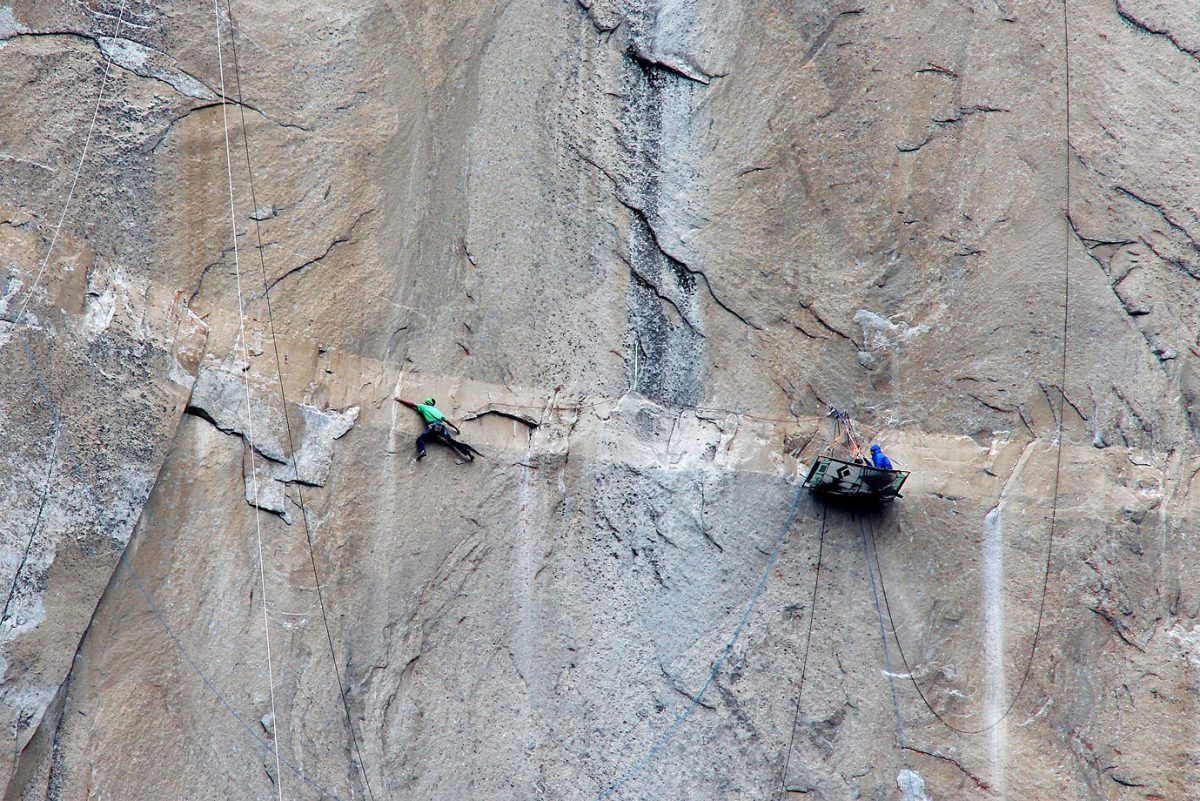
Kevin Jorgeson (in green) climbing on Pitch 15 while Tommy Caldwell belays.
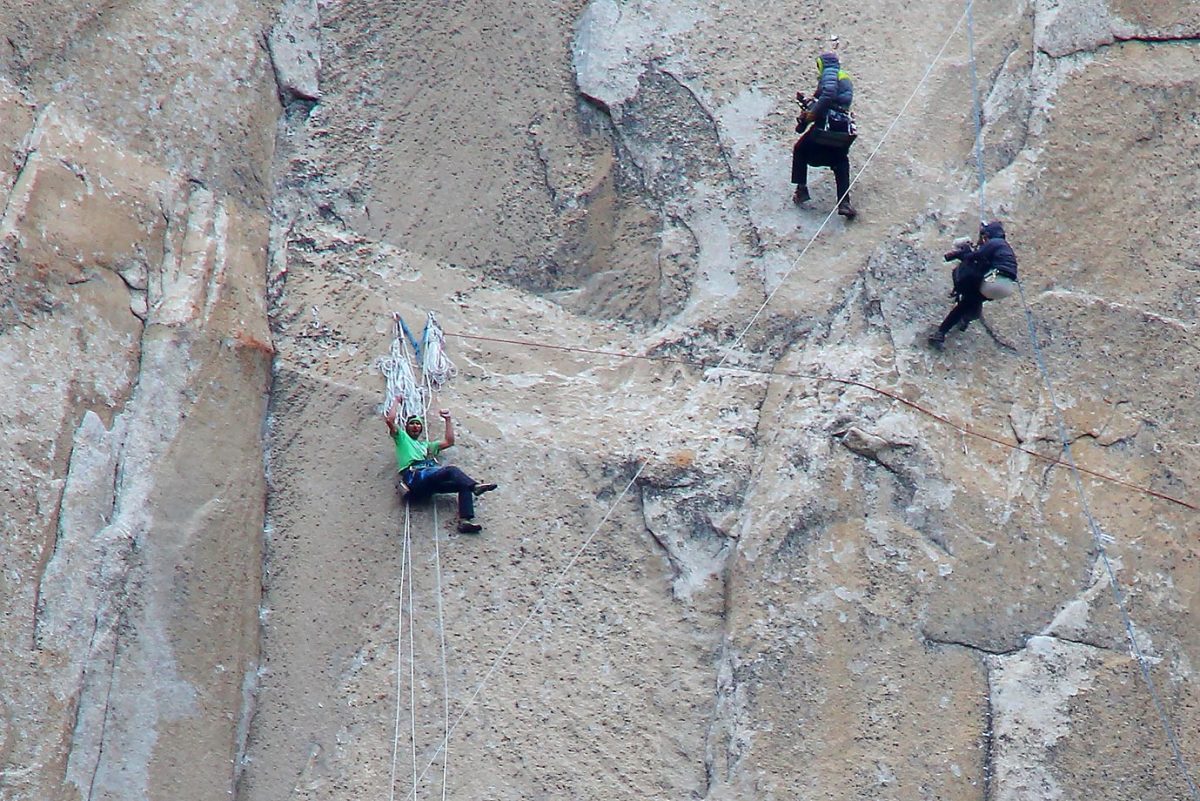
Kevin Jorgeson (in green) celebrating his finish of Pitch 15 while two cameramen shoot video and stills from above.
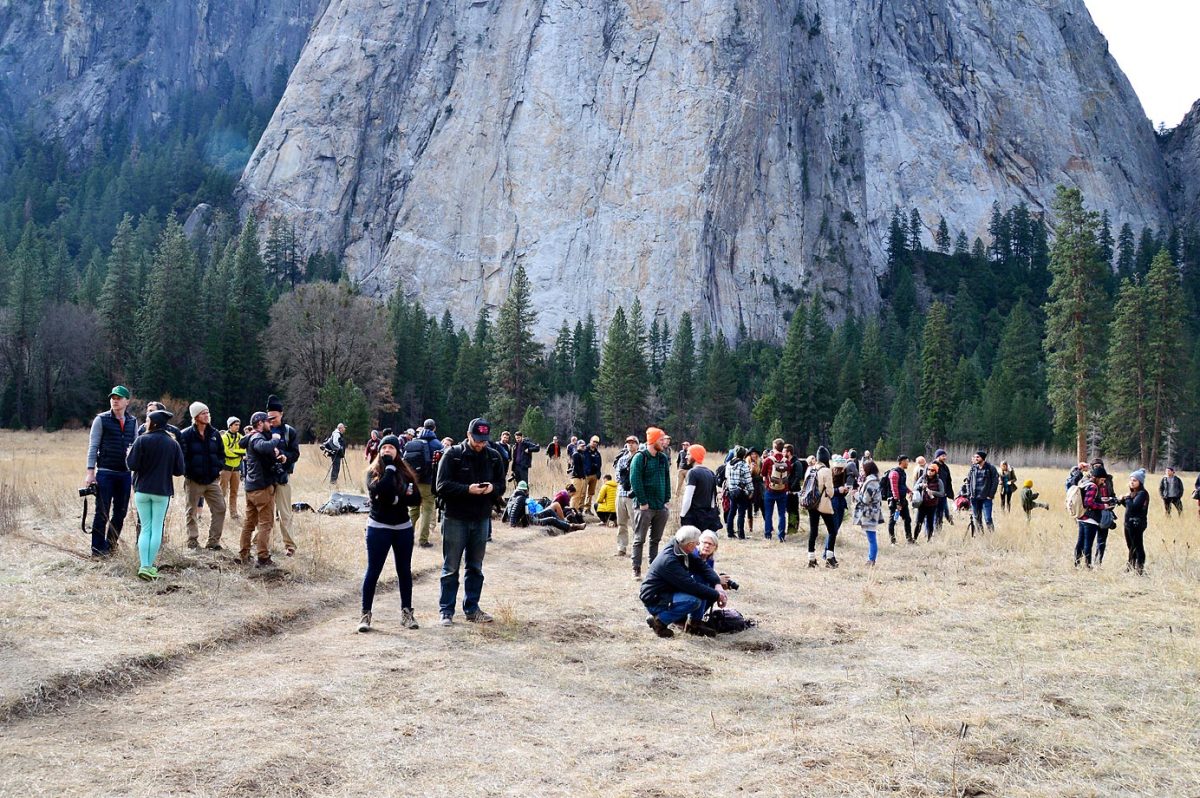
Crowds watch and wait anxiously in ElCap Meadow.
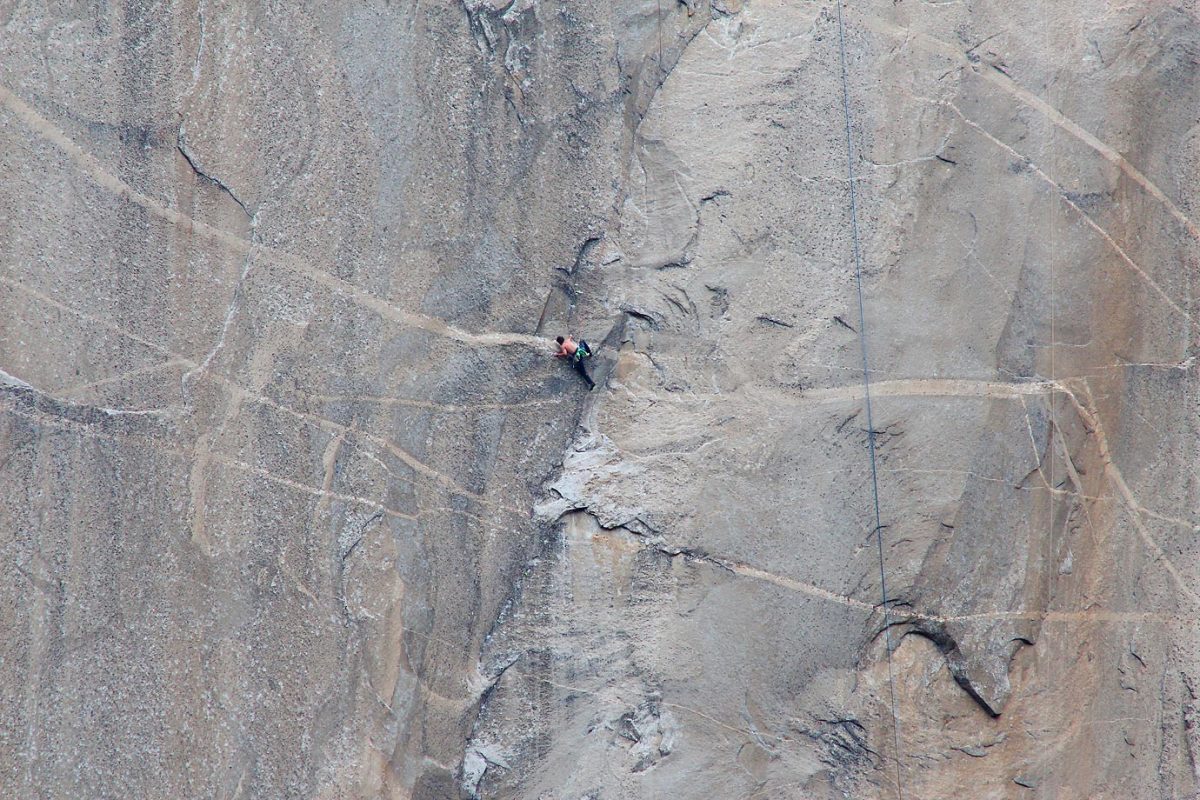
Kevin Jorgeson (shirtless, middle) climbing Pitch 17.
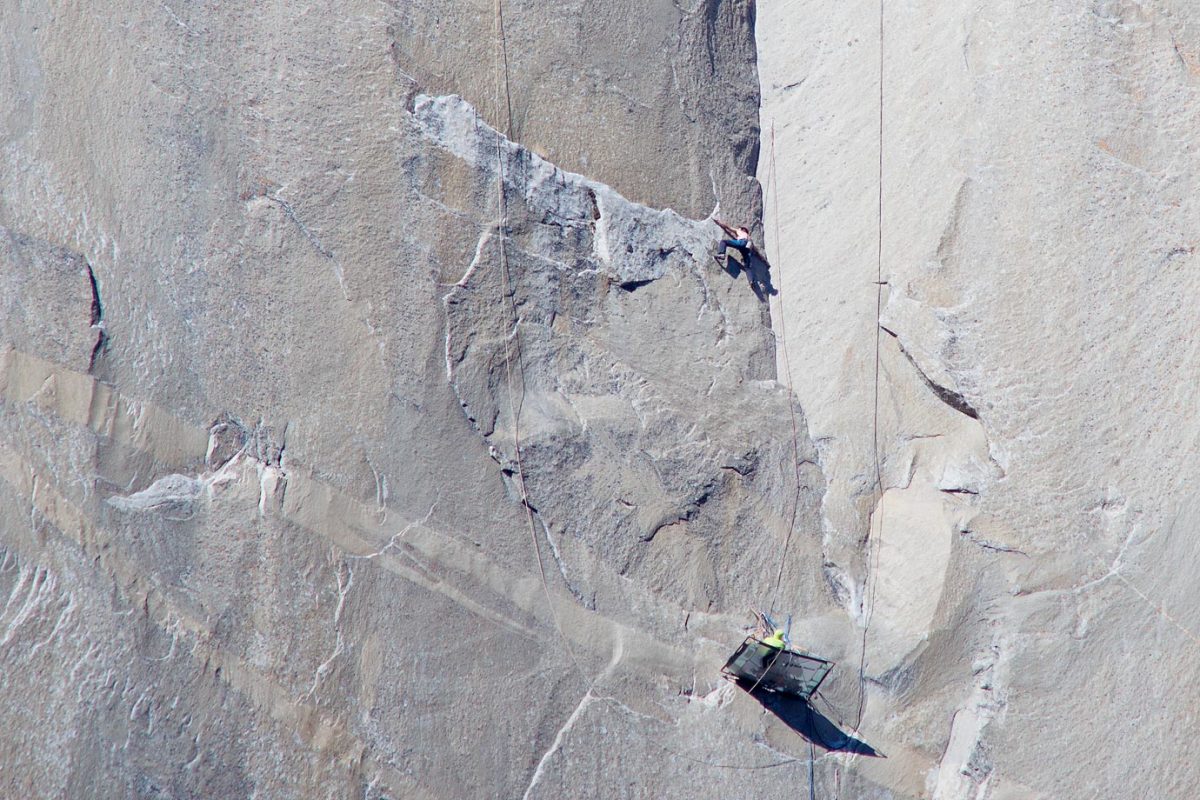
Kevin Jorgeson (shirtless) climbing the top of Pitch 17 while Tommy Caldwell (in yellow) belays below.
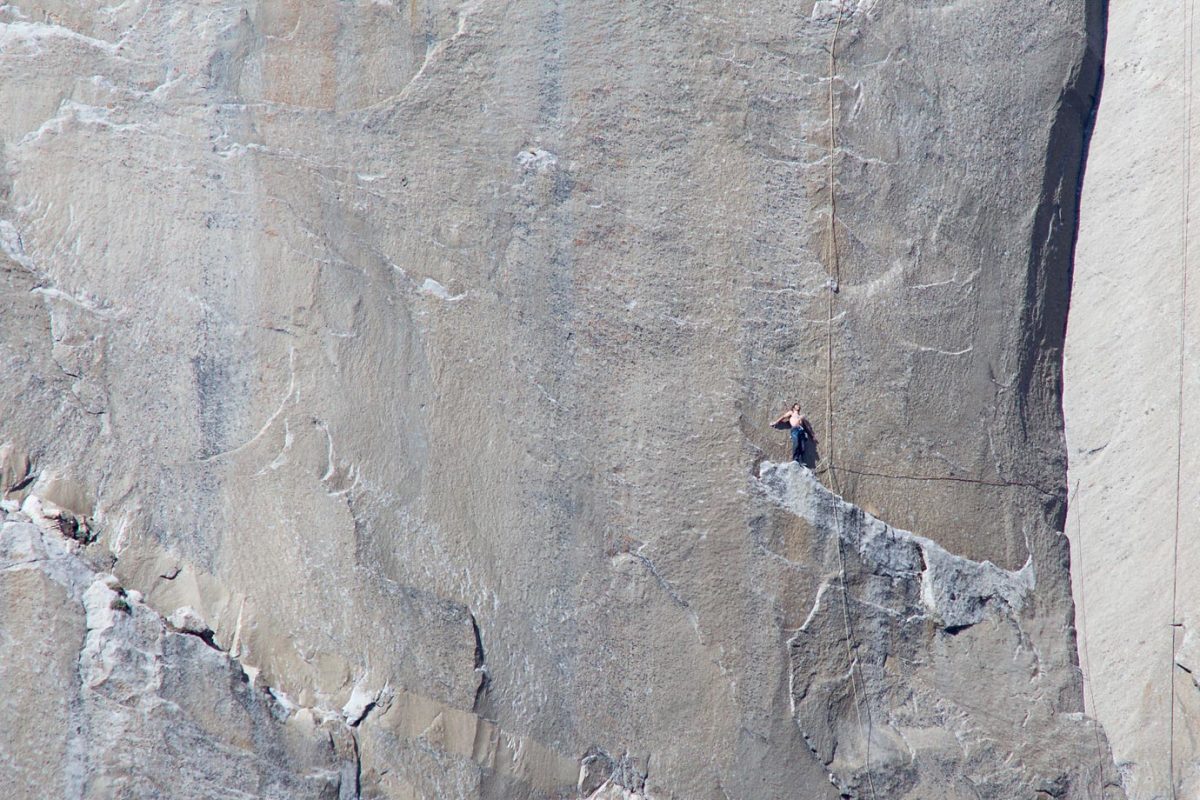
Kevin Jorgeson (shirtless) stands at the beginning of Pitch 18 looking up.
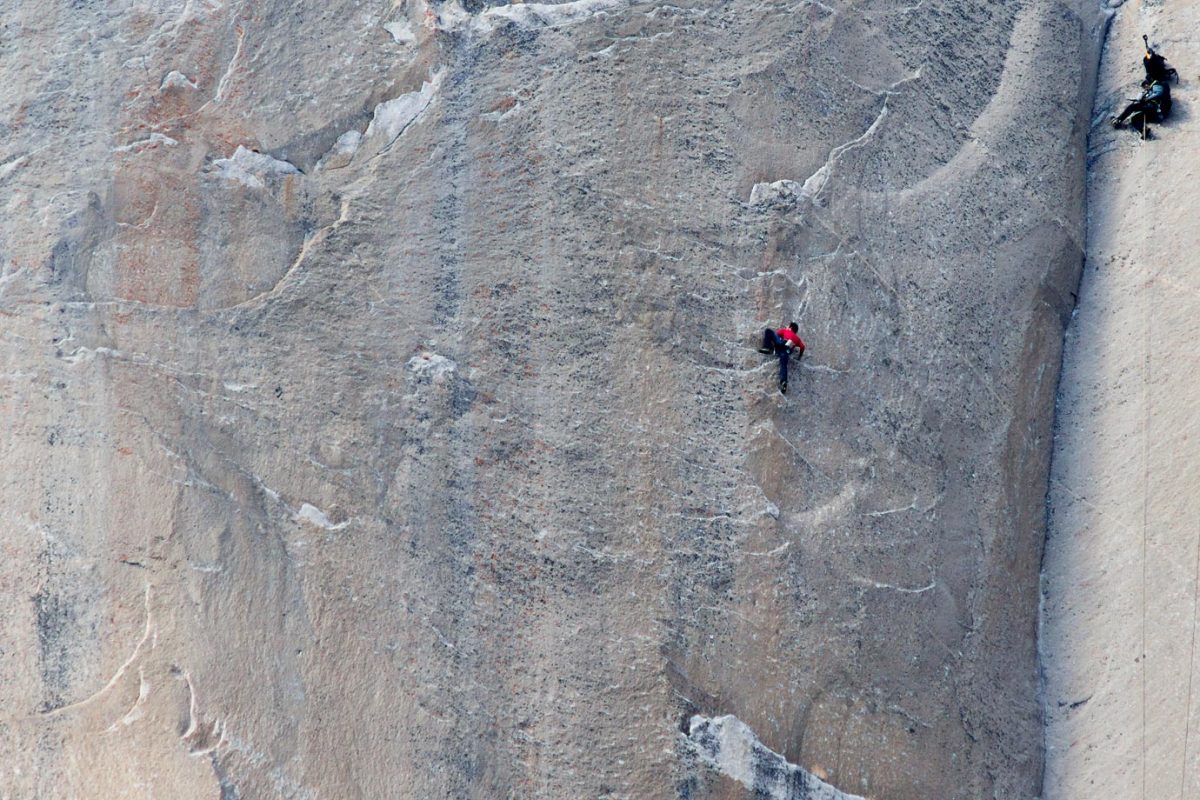
Kevin Jorgeson (in red) climbing on Pitch 18 while a cameraman (in blue, top right) shoots the action.
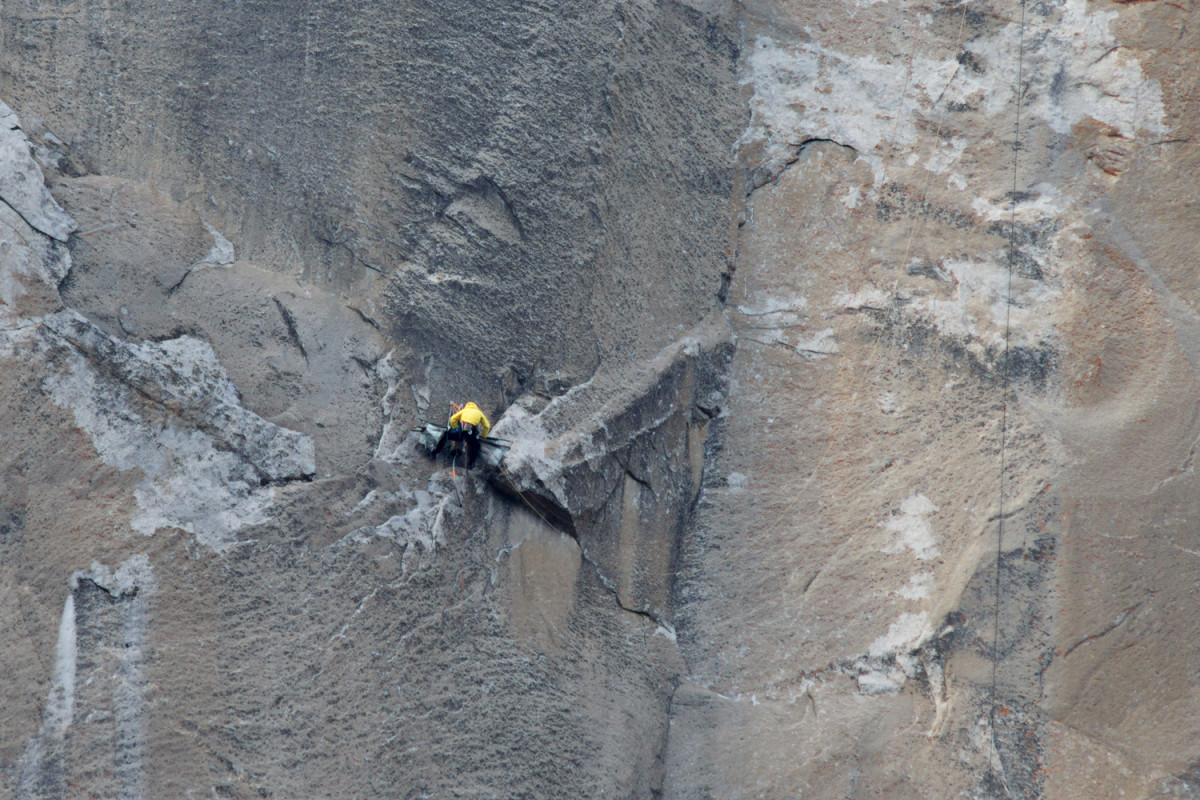
Tommy Caldwell (in yellow) breaking down the Portaledge to move it to the next pitch.
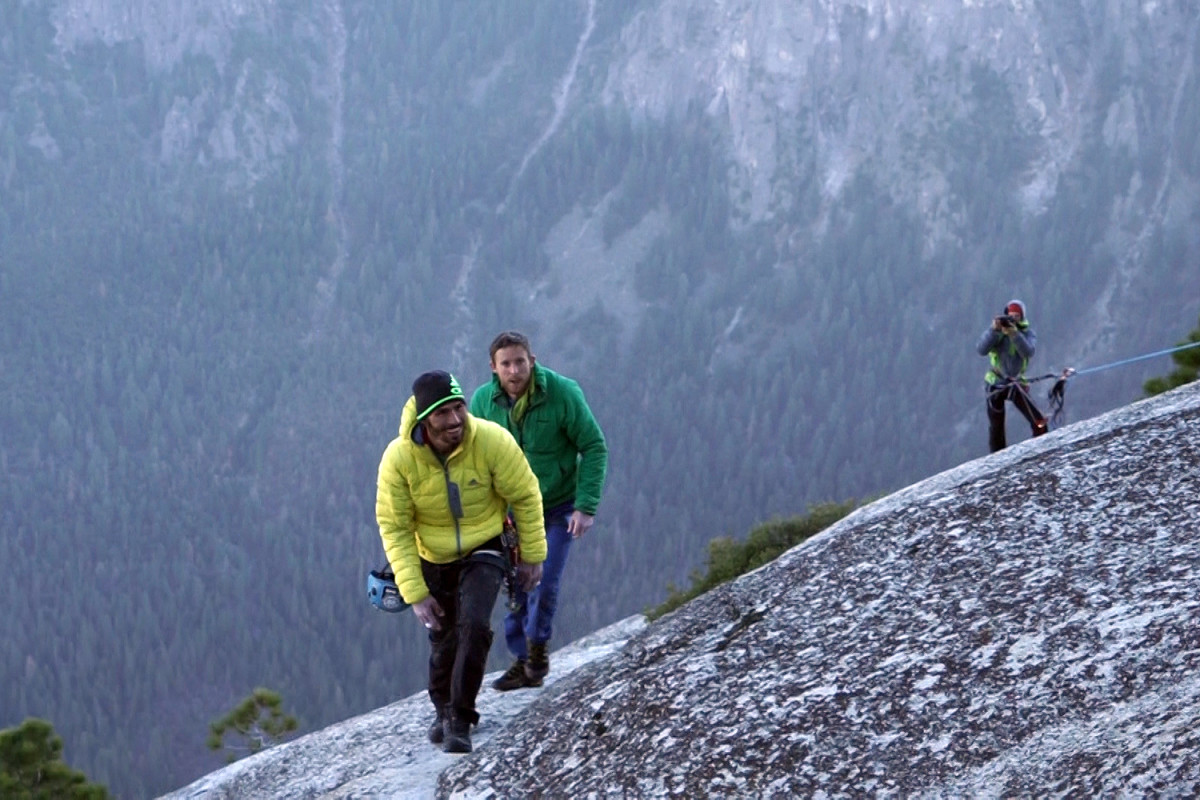
Kevin Jorgeson (in yellow) and Tommy Caldwell (in green) hiking up the summit towards the crowd.
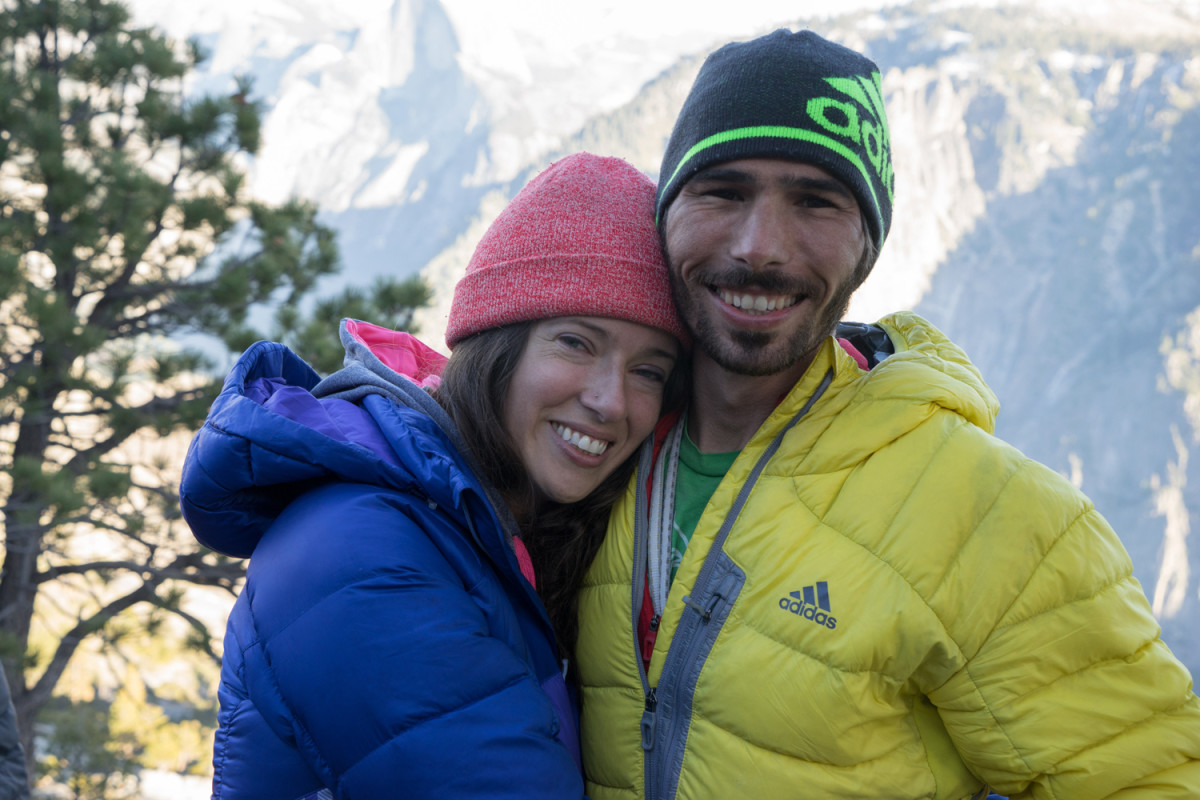
Kevin Jorgeson (in yellow) and his girlfriend Jacqui Becker (in purple).
Easier said than done. The Minnesota course is a gravity playground, launching from the front steps of St. Paul Cathedral, and dropping 131 feet over the course of 500 yards. And just when competitors can sense the finish line, the course throws a wicked, banked left turn at them.
“The biggest physical obstacles in a race are having the power to beat everyone out of the starting gate, the strength to handle the G-forces that you experience through the jumps and landings on the track, the coordination to maintain a strong posture in the air, and the endurance to be able to be competitive in the final races,” says Cameron Lee Naasz, a 24-year-old from Lakeville, Minn., who won the inaugural Riders Cup race at Afton Alps last weekend. “Racing down a Red Bull Crashed Ice track is a huge rush. It’s a similar feeling to when you used to bomb the ski hill when you were younger, except you are ice skating down a huge track with bumps, jumps, and hairpin turns.”
Not to mention three other competitors. For racers to make it the finals, they must survive four heats. Add team competitions, and a successful competitor can run 10 races on a weekend.
“Endurance is a big factor,” says 24-year-old Marco Dallago of Austria, the defending ice cross world champion. “Forty or 50 seconds of skating downhill doesn’t sound like a lot of effort, but I can tell you, if you have an all-out heat, you’re dead [afterward]. It’s exhausting as anything you’ve ever experienced. The better your endurance, the less mistakes you make in the later rounds of the race.”
“The only bad part of these events is the day after,” says Naasz. “I am so exhausted and sore that I can’t move in the morning.”
Unlike skier cross or boarder cross, there are no soft landings in ice cross downhilling. Competitors look like modern-day gladiators, adorned head to toe in hockey or motocross protective gear. The skate of choice is a hockey skate, but with a longer, flatter blade for speed and stability.
“First and foremost you need to be a great skater,” says Bergeson. “After that it’s incredibly important to be able to go over jumps and maintain great balance. Finally you need nerves of steel and great strategy. This is what separates the best riders from the rest.”
As the event’s name implies, crashes are an expected, even integral, part of the fun. Since competitors hit speeds of over 40 mph, the spills are often spectacular.
“When the gates open, it seems like everything goes quiet and primal instincts kick in,” says Bergeson. “The only thing that matters is being first to the bottom. Bodies fly, crashes happen, but there’s no time to think because by the time you do, you are already past the carnage. The only thing I think about the entire race is get in front, stay in front.”
Nothing, according to racers, is as crucial as being first off the starting line.
“Most important is the start,” says Dallago. “You can avoid tons of trouble caused by fights for positioning if you’re in front.”
On the Road: Let the locals lead, says mountain biker Jerome Clementz
Collisions, within reason, are not only accepted, but encouraged.
“A lot of people think it’s crazy because it has this daredevil [aspect] to it, but a lot of the athletes are in more control that it might look to a spectator,” says O'Keefe. “It’s the unknowns that’ll catch you, and the speed of course, which all adds to the thrill. You can catch an edge, someone can fall -- you can make one small mistake and it’s all over.”
As O’Keefe can attest, the sport is an equal-opportunity slam-fest.
“Look for the girls’ race; we kick butt too,” says Jacqueline Legere, a 23-year-old from Ontario, Canada, and the world’s No. 2-ranked female racer. “I first saw crashed ice on TV, and thought it was an amazing, insane sport and I wanted to try it.”
The St. Paul race will feature a field of 16 women, and they’ll have to deal with the same range of emotions as their male counterparts. “You have adrenaline running through you like crazy and you’re always on your toes keeping a heads up, but it’s so fun,” says Legere. “You can’t get anything else like this.”
“It is very easy for anyone to wipe out, so you need to keep an eye out on the ice conditions, as well as other people wiping out in front of you,” she said. “There are a lot of good flat-ice skaters that come and don’t do so well because they aren't used to the transitions.”
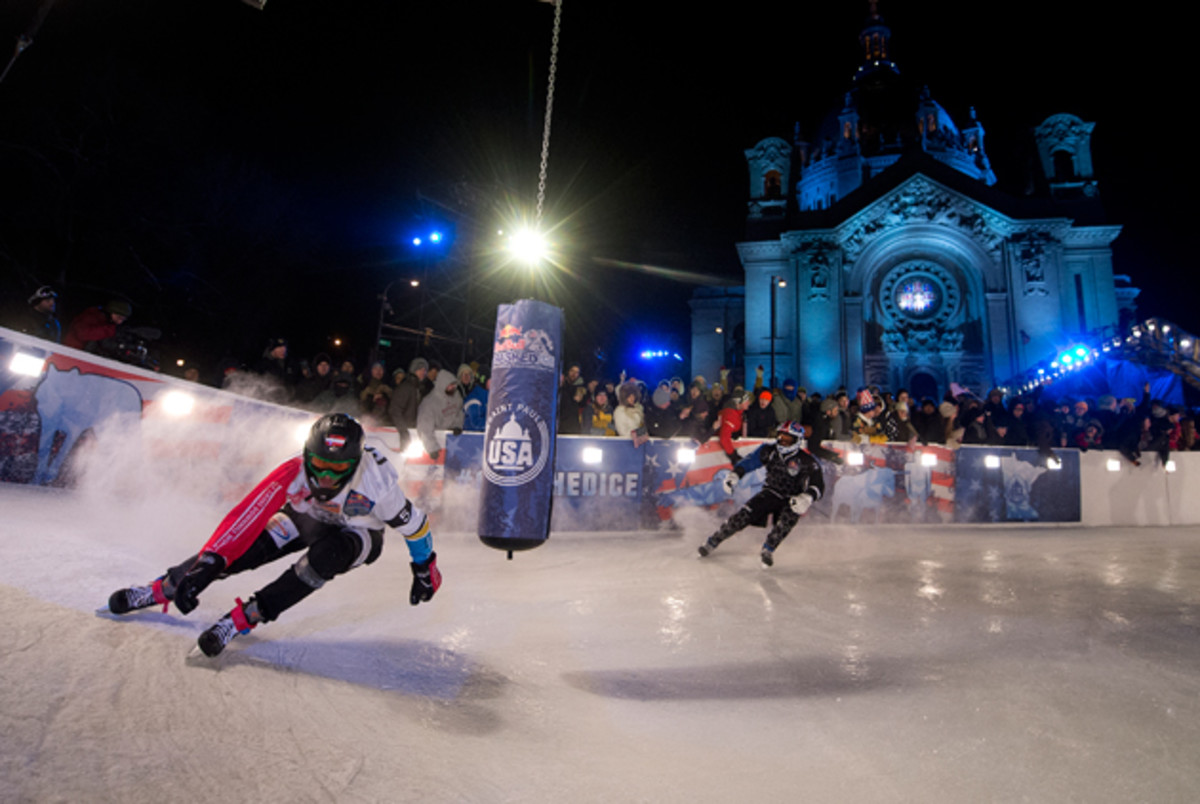
Just as with downhill courses on the FIS World Cup ski tour, no two ice cross courses are alike. Each venue presents an ever-changing array of obstacles. Instead of ski resorts, the Red Bull courses are usually built in urban centers, such as St. Paul, or Quebec City, Canada. “I especially like the North American races, because the crowds are the biggest and the track always very impressive,” says Dallago.
Major ice cross downhill events are also scheduled for Helsinki, Finland, Edmonton, Alberta, and Belfast, Northern Ireland this winter. The Riders Cup competition was added to promote more participation, but doesn't have the same cachet as the Red Bull headline events.
“The tracks they create all look amazing, flowing through the cities with the lights and all the screaming fans,” says Legere. “The fact that they race on ice skates -- something I was good on -- was the icing on the cake.”
“It’s a huge spectacle, with 100,000-plus spectators, music, light. More party and show than sport,” says Dallago. “Surrounded by all the other riders, who are pretty crazy and fun-loving people, it’s the most fun you can ever have. Riding a track that allows you to go 60 kilometers an hour on skates over obstacles and jumps against three other guys. Unless you tried it you won’t have any chance to understand what a feeling that is. The best ever.”
Amid all the bright lights and hoopla, organizers will have four huge video screens providing a view from every angle. But nothing matches seeing the action live. For the optimal experience, competitors suggest that spectators get as close as possible, and find the obstacles.
“The best place to watch is right on the boards,” says Bergeson. “You can feel the speed and strength of the skaters flying by you.”
Flying, figuratively and, quite possibly, literally.
For more details, check out RedBullCrashedIce.com.
